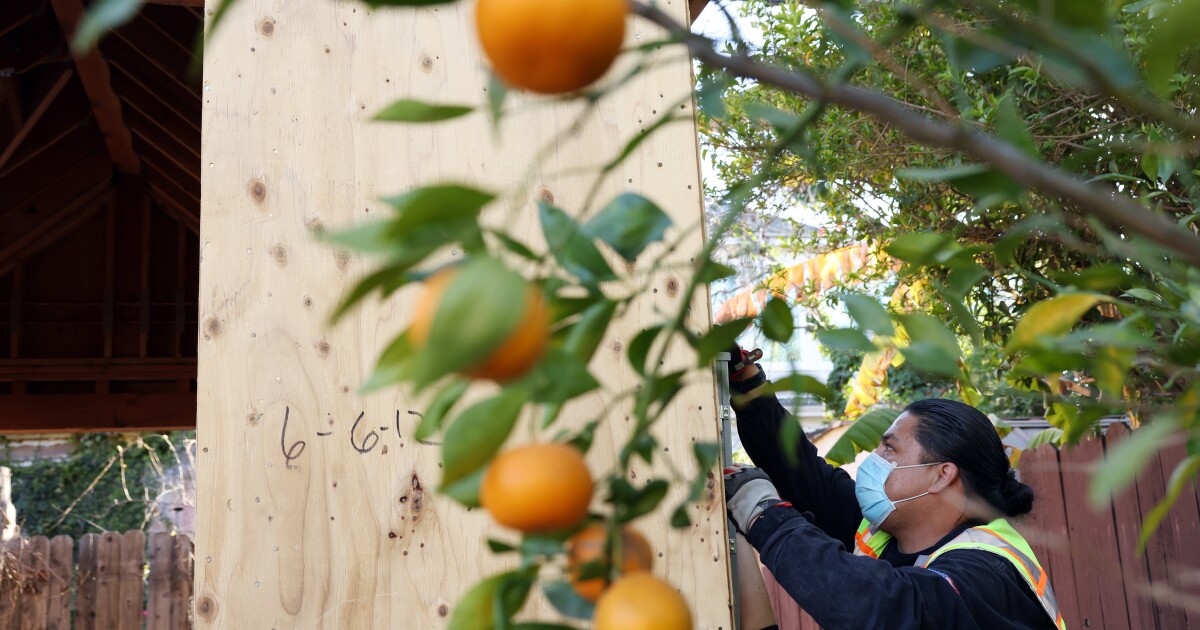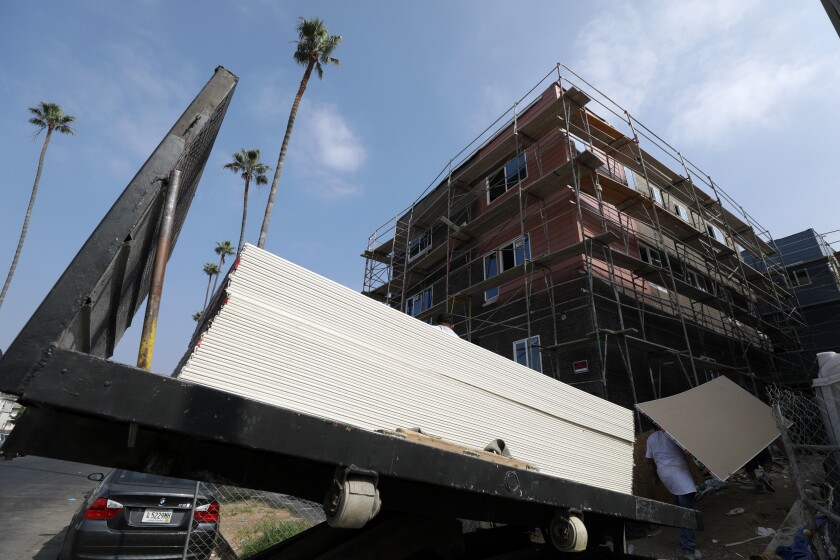
A majority of Los Angeles County electorate again two new state regulations designed to spur housing development, together with person who considerably adjustments conventional single-family zoning, a brand new ballot unearths.
The ballot, by means of the Los Angeles Industry Council Institute, performed in cooperation with the Los Angeles Occasions, supplies one of the most first assessments of public response to the brand new regulations, which might deliver a couple of dramatic exchange to California’s construction panorama.
The regulations, Senate Expenses 9 and 10, take impact Jan. 1.
They have been a fruits of a years-long debate in Sacramento over native zoning restrictions that may drag down housing manufacturing. The combat stirred intense opposition amongst house owner teams, particularly in Los Angeles, the place warring parties mentioned the proposals threatened to break single-family neighborhoods.
Thus far, the ballot signifies, a majority of electorate have now not followed that dire view.
Countywide, 55% of electorate improve Senate Invoice 9, which we could belongings homeowners assemble duplexes, and in some circumstances fourplexes, in maximum single-family-home neighborhoods statewide. Against this, 27% have been a criminal offense whilst 18% have been not sure.
Senate Invoice 10, which we could native town councils expedite development of condominium complexes of as much as 10 devices close to transit hubs and concrete infill spaces, together with in single-family-home zones, will get more potent improve. It has improve of 68% of county electorate with 13% antagonistic and 19% not sure.
The ballot confirmed a pointy distinction between householders and renters, particularly on SB 9. Renters subsidized the legislation by means of greater than 3 to at least one, whilst householders have been carefully divided, the ballot discovered.
Nearly two-thirds of all of the apartments within the state are single-family properties and up to three-quarters of the developable land within the state is now zoned just for single-family housing, in step with a survey by means of UC Berkeley’s Terner Middle for Housing Innovation.
Bungalows and backyards even have lengthy been observed as a key to the “California dream” of modest, middle-class residing.
However such properties proceed to turn out to be much less and not more reasonably priced. The median gross sales worth for an present single-family domestic statewide was once $798,440 in October, in step with the California Assn. of Realtors, an building up of greater than 12% over the past yr. In L.A. County, the median gross sales worth of $848,970 was once nearly 14% upper than closing yr.
Advocates for the brand new regulations contend that they may be able to lend a hand average costs by means of spurring domestic construction in spaces which have been off-limits to new expansion.
“The housing affordability disaster is undermining the California dream for households around the state, and threatens our long-term expansion and prosperity,” Gov. Gavin Newsom mentioned when signing the regulations in September.
“Creating a significant have an effect on in this disaster will take daring investments, sturdy collaboration … and political braveness from our leaders and communities to do the best factor and construct housing for all.”
Renter improve for SB 9 most probably stems from the hope that the legislation might assist you personal properties, mentioned Mark DiCamillo, polling director at UC Berkeley’s Institute of Governmental Research, who acted as a specialist for The Occasions at the new ballot.
“I feel numerous renters are seeking to wreck into the homeownership realm,” DiCamillo mentioned. “They see this as a possible strategy to make bigger provide and get smaller devices to go into the marketplace.”
DiCamillo mentioned he was once stunned that even a plurality of house owners subsidized the brand new legislation, given its possible to disrupt single-family-home neighborhoods.
The findings, together with amongst householders, he mentioned, “should be encouraging for proponents of the brand new legislation.”

Development subject matter is dropped at a housing development website in Koreatown on Oct. 8, 2020.
(Myung J. Chun/Los Angeles Occasions)
Amongst L.A. County Democrats, 59% have been in choose of SB 9, in step with the ballot. Republicans have been narrowly divided, with warring parties somewhat outnumbering supporters, making them the one important demographic team a criminal offense, the ballot discovered.
Within the legislative debate, then again, disputes over the brand new legislation weren’t smartly partisan.
The Los Angeles Town Council, the place 14 of 15 representatives are Democrats, overwhelmingly antagonistic the 2 regulations, with West L.A. Councilman Paul Koretz, a Democrat, pronouncing they’d “kill communities and the surroundings.” Some advocates in South L.A. antagonistic the brand new regulations at the grounds that they’d advertise gentrification.
Some Republicans within the state Legislature have been supportive of the 2 regulations, arguing that they make bigger householders’ belongings rights.
Already, some towns around the state are making plans insurance policies to blunt the results of SB 9. Some, for instance, would prohibit the scale and peak of latest tendencies, mandate parking spots and require that further housing devices be rented best to these making average or low earning.
Criminal demanding situations over such measures are most probably.
It’s additionally imaginable that the brand new regulations won’t make a dramatic distinction.
The regulations don’t limit the development of latest single-family properties. SB 9 lets in belongings homeowners to construct duplexes — or fourplexes — on their land in the event that they need to, however doesn’t require that anybody achieve this. Any adjustments inaugurated by means of SB 10 require a town council’s approval first.
Additionally, different zoning adjustments lately have already made it so much more uncomplicated for belongings homeowners to construct smaller secondary properties — referred to as granny residences, casitas or accent living devices — on parcels zoned for single-family properties.
The ballot was once performed between Oct. 27 and Nov. 3 amongst 906 registered electorate in L.A. County. The pattern was once break up for the questions about SB 9 and SB 10, with more or less part the electorate requested about every invoice. The margin of error for the ones effects is 4.5 proportion issues in both route.
